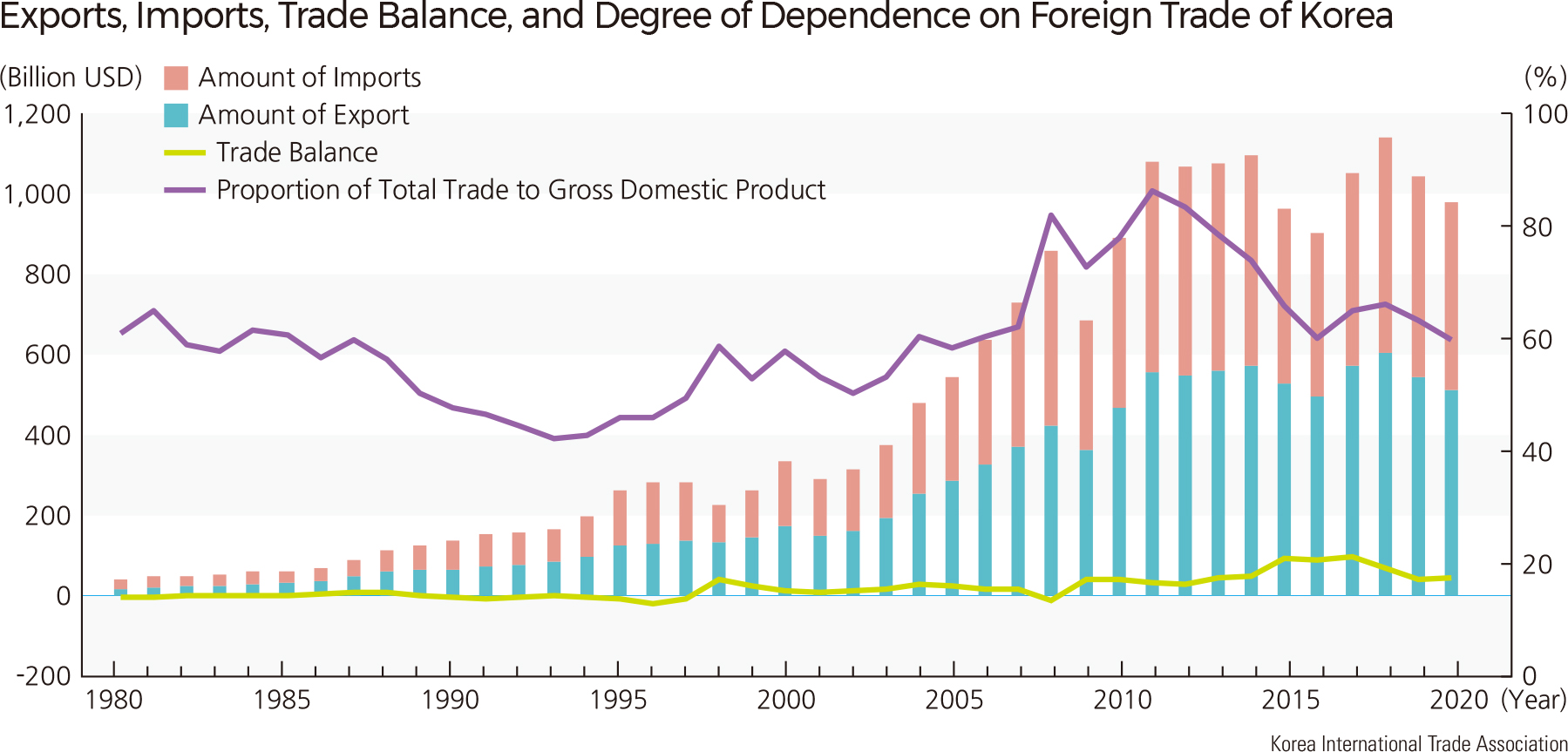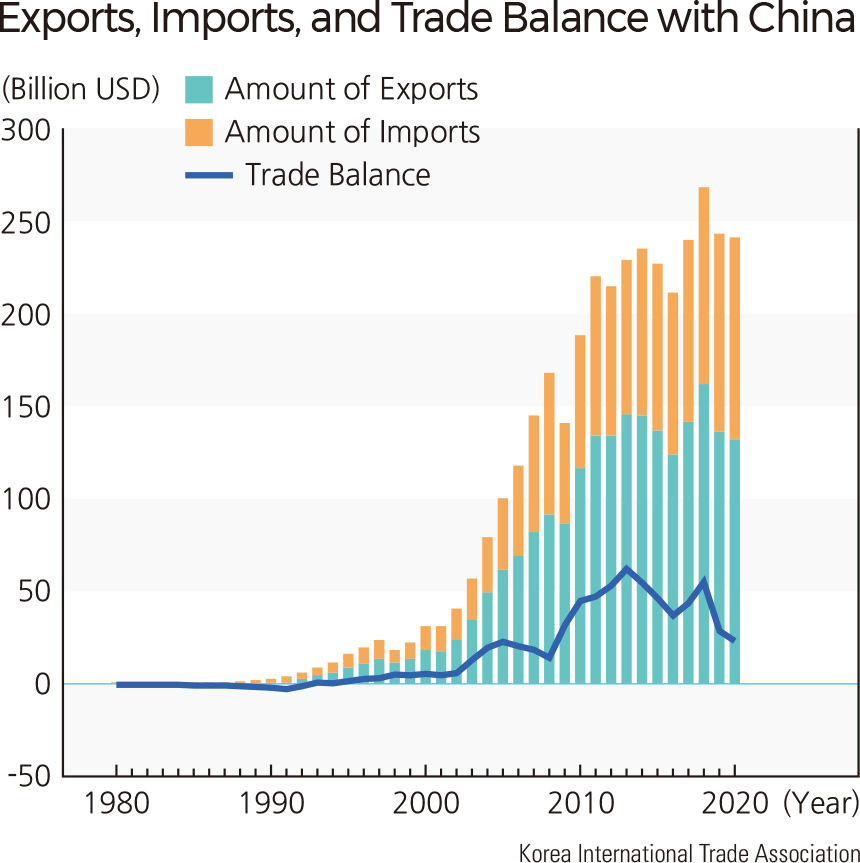Comprehensive Edition 2022
Over the past five decades, international trade has played a crucial role in the economic development of South Korea. Such trade includes the exchange of goods, services, and capital across borders, as well as the flow of intangible commodities such as finance, insurance, and information technologies. International trade agreements like free trade agreements (FTAs) also play a significant role in the country’s international economic environment.
The growth of South Korea’s trading can be attributed to export-oriented economic development strategies implemented by the government through five-year plans, starting in 1962. As a result, trading volumes have risen from around $100 million in 1964 to over $1 trillion by 2011, reaching $1.14 trillion in 2018. However, in 2020, due to the COVID-19 pandemic, it declined to $980 billion. South Korea is now ranked 8th in the world by trading volume. Along with this growth, the country’s economy has become more reliant on international trade. There has been an especially rapid increase in trade since the early 2000s.
Trends show particularly strong growth in exports since the early 2000s. For example, exports increased from $150 billion in 2001 to $560 billion by 2013, resulting in a trade balance growth from $9 billion in 2001 to $44 billion in 2013. Korea’s main exports include products such as integrated circuits and semiconductors, automobiles and car parts, passenger and cargo ships, and electronic components such as LCDs and smart phones. The export of semiconductors has also increased significantly since 2008. By 2010, semiconductors had become the single largest export commodity, although they made up a smaller proportion of all export goods once prices in the world market began declining in 2011. Automobile exports have also risen as a result of recent FTAs with the US and increasing demand from other advanced economies.
Alongside these export trends, South Korea has also seen significant growth in imports, despite a downturn during the global economic crisis in 2008. The subsequent rise in oil prices and the importation of equipment have contributed to rising imports. Crude petroleum has been the most significant imported good, accounting for over 30% of the value of total imports. In 2011, Korean crude petroleum imports surpassed $100 billion for the first time, accounting for 33% of total imports that year.
South Korea’s main export partners are China, the US, Japan, Singapore, Vietnam, and the European Union (EU). Exports to China, the top trading partner, increased from $4 billion in 1989 to $174 billion by 2013. Exports to Vietnam also increased rapidly due to the growth of Korean foreign direct investments there. The relative proportion of exports to advanced economies such as the US, Japan, Singapore, and the EU has decreased. Imports have followed a similar trend, with the major import partners being China, Japan, the US, and Saudi Arabia. |




